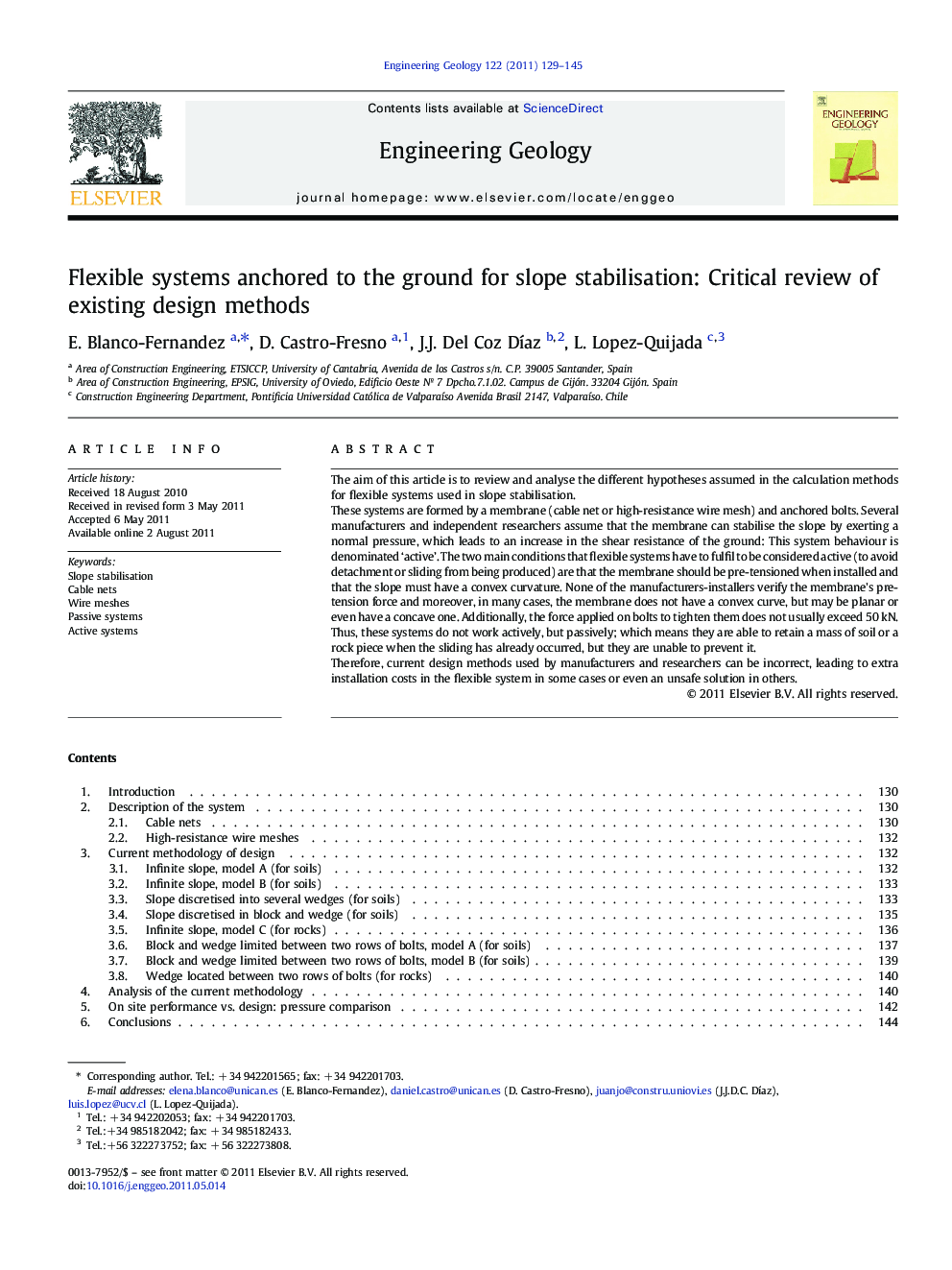| کد مقاله | کد نشریه | سال انتشار | مقاله انگلیسی | نسخه تمام متن |
|---|---|---|---|---|
| 4744244 | 1641850 | 2011 | 17 صفحه PDF | دانلود رایگان |

The aim of this article is to review and analyse the different hypotheses assumed in the calculation methods for flexible systems used in slope stabilisation.These systems are formed by a membrane (cable net or high-resistance wire mesh) and anchored bolts. Several manufacturers and independent researchers assume that the membrane can stabilise the slope by exerting a normal pressure, which leads to an increase in the shear resistance of the ground: This system behaviour is denominated ‘active’. The two main conditions that flexible systems have to fulfil to be considered active (to avoid detachment or sliding from being produced) are that the membrane should be pre-tensioned when installed and that the slope must have a convex curvature. None of the manufacturers-installers verify the membrane's pre-tension force and moreover, in many cases, the membrane does not have a convex curve, but may be planar or even have a concave one. Additionally, the force applied on bolts to tighten them does not usually exceed 50 kN. Thus, these systems do not work actively, but passively; which means they are able to retain a mass of soil or a rock piece when the sliding has already occurred, but they are unable to prevent it.Therefore, current design methods used by manufacturers and researchers can be incorrect, leading to extra installation costs in the flexible system in some cases or even an unsafe solution in others.
► Critical review of existing design methods. Most authors consider active behaviour.
► Establishment of conditions for active behaviour: convex shape, prehensile force.
► Fulfilment checkups of active behaviour: conditions not fulfilled.
► Conclusions: system behaviour is passive (retains instabilities), not active.
► Recommendations: design approach based on numerical simulations.
Journal: Engineering Geology - Volume 122, Issues 3–4, 10 October 2011, Pages 129–145